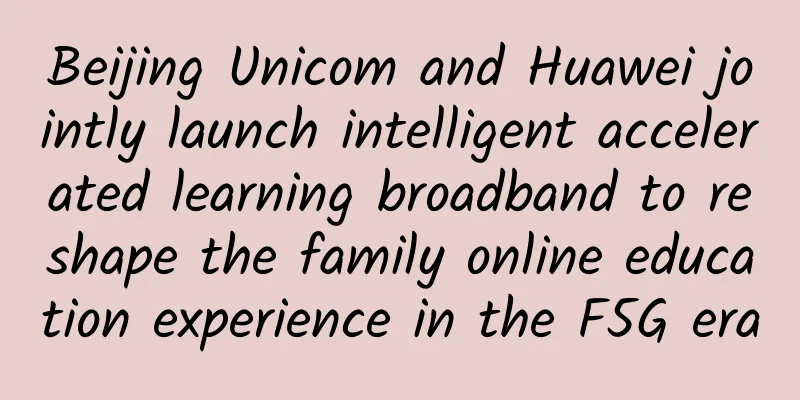From the road to practice, Huawei is on the top of the storm

|
At present, all industries are accelerating into the fast lane of digital transformation, hoping to achieve transformation through cloud, AI, 5G and other technologies to support long-term and sustainable business growth. As a leading global provider of ICT infrastructure and smart terminals, Huawei has 194,000 employees, more than 900 branches, and 15 R&D centers around the world. Its business covers more than 170 countries and regions, serving more than 3 billion people... How can such a large and complex organization operate internally to achieve efficient business operation and global management collaboration? On June 22, Su Liqing, Vice President of Huawei Cloud BU and Chief Digital Transformation Officer, and Wan Ning, founding director of the domestic CIO community ITValue, co-founder and chief research officer of Titanium Media, discussed Huawei's digital transformation and cloud practices in a high-end dialogue live on Huawei Cloud & AI Live. They talked about how large and medium-sized enterprises can use digital technologies such as cloud and AI to achieve digital production, services, and operations, improve efficiency, accelerate intelligent upgrades, and embrace new opportunities brought by new infrastructure. Su Liqing (right) and Wan Ning (left) share digital transformation practices at Cloud & AI Live Su Liqing said that since 2018, Huawei has decided to make digital transformation the focus of the company's transformation in the next five years. It hopes to become an industry benchmark by building Digital First, that is, realizing a fully connected intelligent Huawei. The motivation for transformation is consistent with that of many companies that want to promote digital transformation: externally, Huawei can do business with customers in a simple, efficient and secure manner; internally, it will gradually improve the efficiency and benefits of operations. As the saying goes, without going through the bitter cold, how can the plum blossoms smell fragrant? Huawei's road to digital transformation has not been smooth sailing, and it has also experienced tremendous pressure and challenges. However, Su Liqing, who has a business background and an IT background, adheres to the goal of "creating value for the business" and leads the team to forge ahead. The realization of this goal is due to the "five transformations" methodology of digital transformation that Huawei has explored and summarized in practice, namely, transformation of consciousness, organization, culture, methods and models. They focus on what needs to be transformed in digital transformation: l Change of consciousness: Digital transformation is a "duet", in which technology and business need to be deeply integrated and coordinated, that is, business and technology are "dual-wheel driven". l Organizational transformation: Business and IT should form a joint team with a deep understanding of both business and IT, and achieve a "ham sausage architecture" in which you are in me and I am in you. l Cultural transformation: Through platform culture, we build platforms and ecosystems together in the way of "everyone for me and I for everyone", forming a new and constantly iterative architecture to meet the higher digital transformation needs of enterprises. l Transformation method: Through "digitalization of objects, online processes, and structuring of rules", business automation can be achieved, truly creating huge value for the efficient operation of the business. l Transformation: Adopting the "Bi-Model" dual-mode approach of building without breaking, embracing the future and adapting to the past. In other words, adapt the existing systems of the past and connect them through data; in the newly built systems, adopt a new microservice architecture based on the cloud and driven by data. This entire set of digital transformation methodology can be highly summarized as a "twelve-word motto": l The same desire from top to bottom: The top management of the company should pay attention to this and drive the company to form a digital transformation cultural environment that is consistent from top to bottom. l Two-wheel drive: It requires the joint participation of the business department and the IT department, working side by side. l High aspirations but low performance: To aim at value, one must have an overall plan while also paying attention to the actual results. l Establish without destroying: We must embrace new IT architectures, integrate existing IT systems, and adopt a dual-mode IT architecture. In the process of digitalization, Huawei has formed an integrated team with business and IT based on the unified HIS (Huawei IT Service) digital platform service to jointly build applications and equipment to support business efforts in digital office, digital logistics, digital transactions, and digital operations, helping businesses to "produce more crops and increase soil fertility." Taking digital logistics as an example, through end-to-end digital transformation, Huawei has achieved 80% of deterministic logistics operations automation, 50% of decision-making business intelligence, and end-to-end overall efficiency has increased by 40%. In the construction of the HIS digital platform, business and IT jointly build public application services, accumulate business capabilities with high reuse, realize capability sharing, build an "intelligent brain", and improve AI algorithms and services; and focus on 5 types of business objects to create real-time public data service capabilities; through Huawei Cloud Stack, multi-cloud management is realized, external capabilities are quickly introduced, Huawei cloud resources and services are shared, the company's R&D operations and AI capability enhancement are supported, and intelligent upgrades are achieved. During the epidemic, Huawei connected employees and users around the world through WeLink, Huawei Cloud's intelligent work platform, to ensure uninterrupted daily business and uninterrupted connections with customers. WeLink better connected people, business, and knowledge, and as a public capability, it also supported a significant improvement in the experience and efficiency of employees and partners. Huawei's successful practice of digital transformation is a microcosm of the digital transformation of many large-scale government and enterprises in China. Under the wave of new infrastructure, enterprises should accelerate the "running" of their business architecture on the new information highway and walk on the top of the wind. |
<<: Three reasons to build a converged Wi-Fi and IoT network
>>: Operational data of the three major operators in May: 5G has a unique outlook
Recommend
What is the Internet backbone and how does it work?
Tier 1 Internet Service Providers (ISPs) connect ...
Huawei Cloud Ecosystem is "Very Different" in 2018, Focusing on "Quantity" and "Quality"
[51CTO.com original article] On March 22, "G...
Actual measurement: What is the relationship between the router antenna direction and Wi-Fi signal?
Recently, I saw a discussion on the Tieba forum a...
IDC: Strong growth in enterprise WLAN market in the fourth quarter and full year 2021
According to IDC's Global WLAN Market Quarter...
MWC19 Shanghai | Open decoupling, the next generation evolution of operator networks
[[268794]] With the promotion and application of ...
To help students' future, Ruijie Smart Cloud Classroom creates a new teaching model
[51CTO.com original article] Recalling the scene ...
HostingViet: Vietnam VPS monthly payment starts from 28 yuan, 2GB memory/20G SSD disk/150M unlimited traffic
HostingViet is a local Vietnamese host establishe...
Analysis: Which businesses need a dedicated wireless network?
Over the past few years, private wireless network...
Megalayer: Dedicated servers from 299 yuan/month, optimized CN2 lines in mainland China, Hong Kong/Philippines/US VPS annual payment from 159 yuan
Megalayer is a subsidiary of Vofo, founded in 201...
Modernizing Configuration Management to Address Network Complexity
The expansion of network infrastructure to multip...
5G applications are gaining attention, adding new impetus to smart education!
Education is a national priority. my country has ...
TSMC factory suddenly outages! May lose 200 million yuan, 30,000 wafers damaged
According to Taiwanese media reports, yesterday m...
US reportedly allows chip sales to Huawei but only for non-5G business
Things have been bad for Huawei since the US ban....
"No products, no discounts, no sales" Huawei's new "knowledgeable" approach
Not long ago, an online experience store with &qu...









